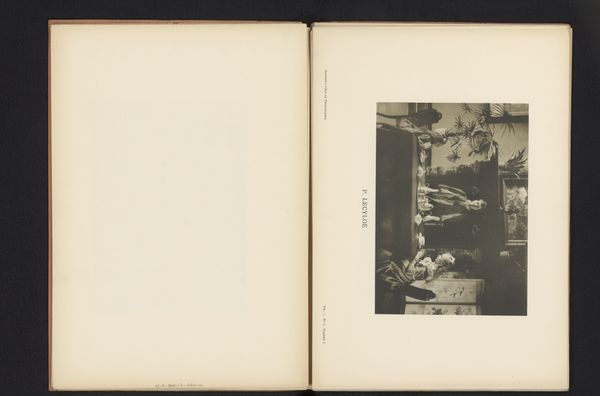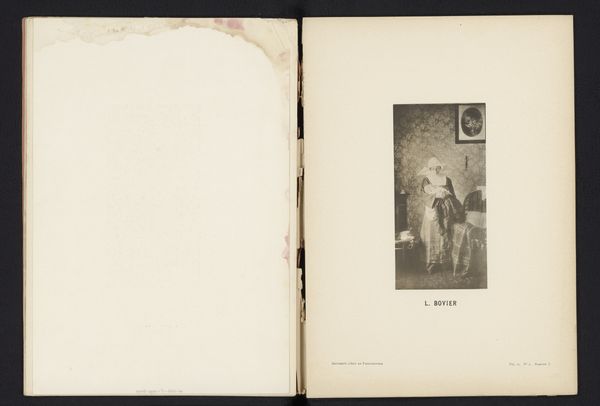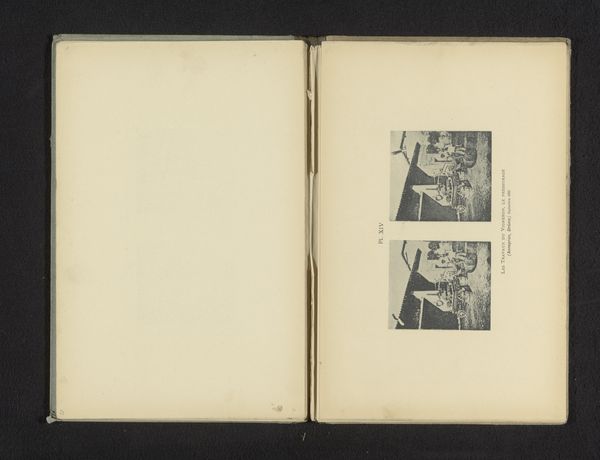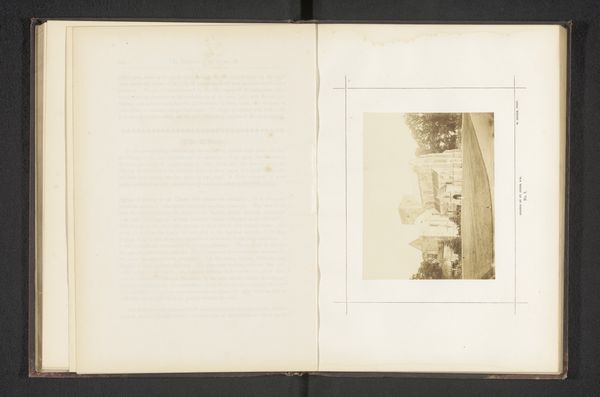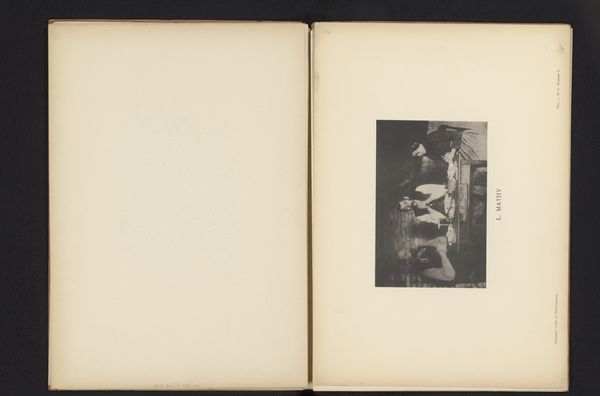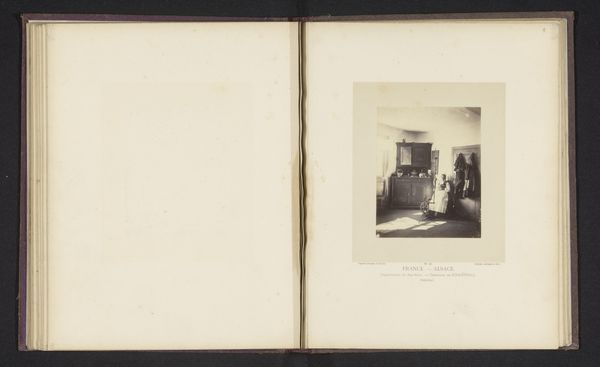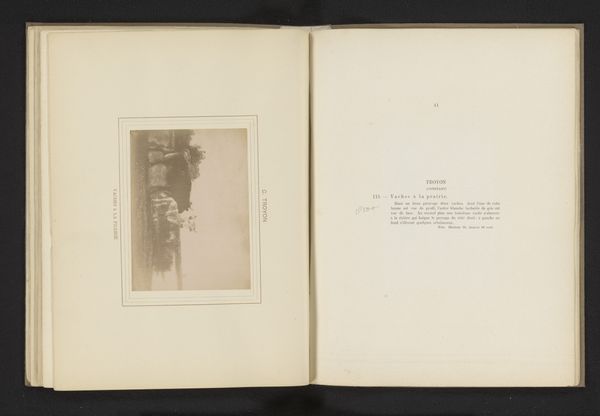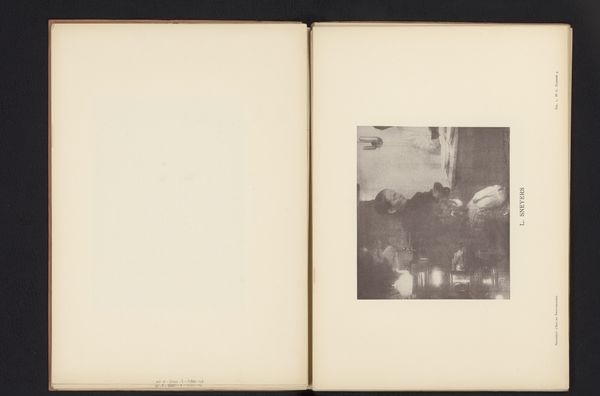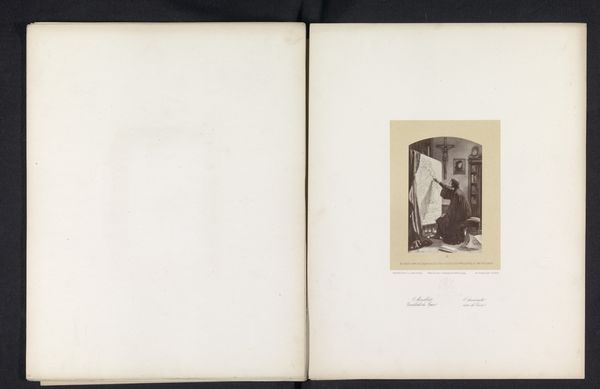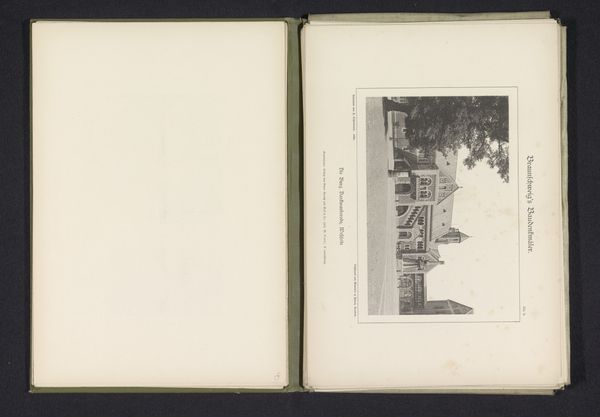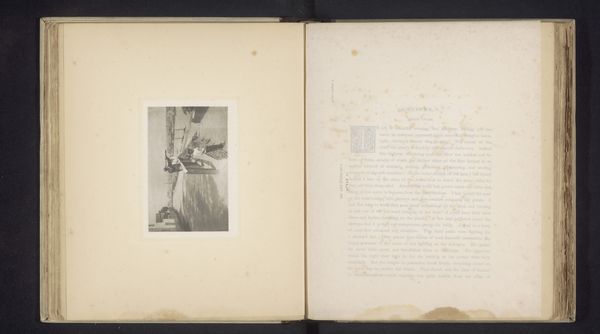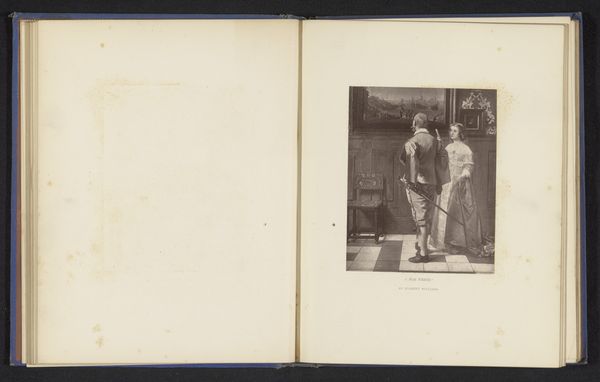
photography
#
portrait
#
paperlike
#
personal journal design
#
paper texture
#
photography
#
clear font
#
thick font
#
white font
#
genre-painting
#
delicate typography
#
thin font
#
realism
#
historical font
#
small font
Dimensions: height 168 mm, width 118 mm
Copyright: Rijks Museum: Open Domain
Editor: So, this is Fernand Bourland's "Kind op een kruk," a photograph from before 1899. It's a simple portrait of a child, but the stark setting makes it feel incredibly lonely. What jumps out at you when you see it? Curator: The first thing I notice is the interplay between the individual and their social environment. This photograph isn't just a picture of a child; it's a visual document hinting at broader socio-economic conditions. The child's placement within this austere setting evokes questions of poverty, childhood labor, and the limitations imposed by social class. Editor: That's a perspective I hadn't considered. The setting felt more like a backdrop to emphasize the child, not necessarily indicative of broader societal issues. Curator: Think about the choices Bourland made. Why this setting? Why this pose? Photography at this time was often used as a tool for social reform, and to document the lives of those often overlooked. Is this image meant to elicit empathy? Perhaps to raise awareness of child welfare issues? The simple fact it has been printed and preserved suggests the photograph itself plays an advocacy role. Editor: That makes sense. Knowing the historical context really shifts my understanding of the artist's intent. It’s not just a portrait; it's a statement. Curator: Precisely. It reveals how photography served as a tool to shape public perception. We must consider, even today, how images impact our social conscience. The selection and display of artworks also serve as evidence of our cultural values and awareness. What do you make of its position within a publication? Editor: Good point. It makes me think about how the museum decides what art is seen and remembered. Thanks, I've definitely learned a lot. Curator: And I appreciate your insights into its immediate emotional impact!
Comments
No comments
Be the first to comment and join the conversation on the ultimate creative platform.
